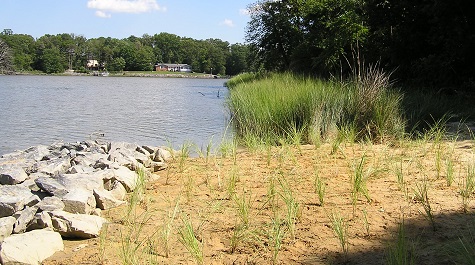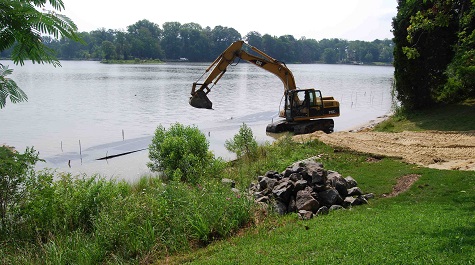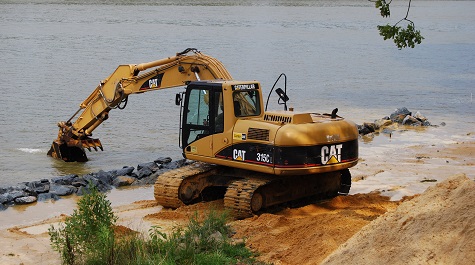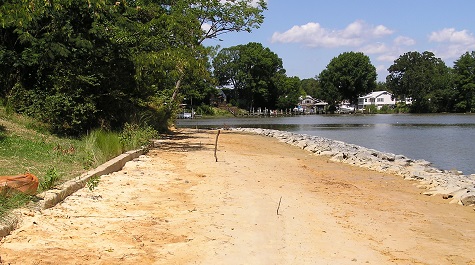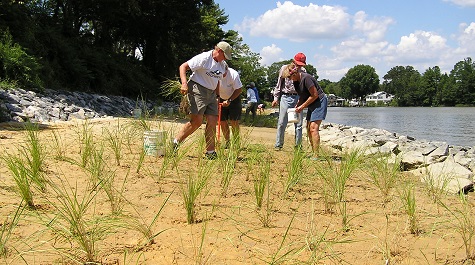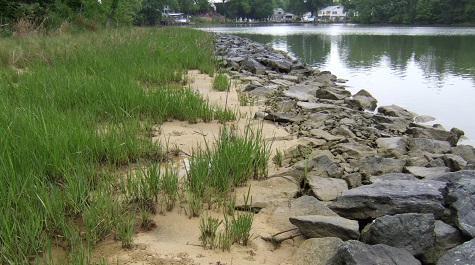Marsh Sill
... with Planted Marsh
A marsh sill is another type of low-profile structure used to contain sand fill to create a new planted marsh where one does not occur naturally. Marsh sill placement is site-specific depending on bank height and whether bank grading can also be performed, the water depth and bottom type near the shoreline, and the potential for successful marsh vegetation growth.
Suitable Sites
- Minor upland bank erosion in tidal creeks
- Failed bulkheads or revetments with lawns
- Adjacent to graded banks
- Where plenty of sunlight reaches shoreline without removing a lot of trees
- Very shallow water extending at least 30 feet offshore with hard sand bottom
- Where construction access is feasible and navigation will not be interrupted
Guidelines for Marsh Sill
- Suitable construction materials include granite quarry stone (riprap) or clean broken concrete free of metal and re-bar; broken concrete is best used as core material capped with quarry stone. Avoid asphalt, demolition debris, or other toxic substances
- Locate near mean low water elevation or landward, determine placement based on level of protection needed and feasibility for bank grading
- To minimize encroachment, sills should be designed to match the expected wave climate and the sand fill should be graded on an average slope (8:1 or 10:1) to the back of the sill
- The sill should be open ended, it should not tie into the upland bank
- The height should be near mean high water in low energy settings to allow regular wave overtopping and access for marine organisms
- The height can be raised 1-2 ft above mean high water in moderate energy settings or where the marsh is less than 15 feet wide and the marsh width cannot be increased.
- Strategically place tidal gaps if the total length of marsh sill is greater than 100 ft. ; tidal gaps can be designed at shoreline turns, offsets, upland drainages, and for recreation access
- All material stockpiles and equipment storage should be in the upland area
- Only clean coarse-grained sand fill should be used, no soil amendments are necessary
- Allow for at least 1-2 weeks of settlement before planting the sand fill area, verify actual tide levels within planting area and adjust slope or height if necessary before planting


